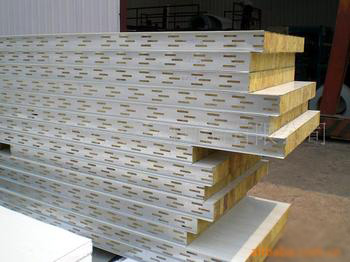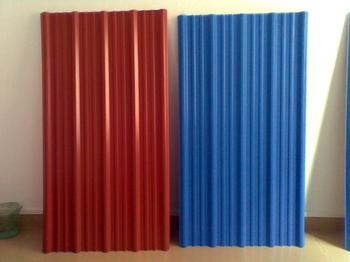热门关键词:济南彩钢板 | 济南复合板 | 济南彩钢瓦 | 济南c型钢 | 济南钢结构 |
新闻中心
联系我们

济南坚固彩钢工程公司
联系人:孙经理
电话:18963458998
地址:济南市工业北路81号北邻
济南复合板的热处理要求有哪些?
来源:http://www.jnjgcg.com/ 日期:2020-03-25 发布人:
今天,金属复合板生产厂家小编来讲解一下复合板的热处理要求:
Today, the manufacturer of metal clad plate will explain the heat treatment requirements of the composite plate:
为了爆炸复合界面的残余应力,对爆炸复合试样1Cr18Ni9Ti/Q235A进行了不同温度、不同保温时间的热处理。对包层厚度d f=2mm,加载比R=1.20的试样进行了焊接界面显微硬度测量。样品在550℃处理1h后,显微硬度曲线与常温曲线差异不大。但试样在650℃和750℃处理1h后的显微硬度曲线明显低于常温曲线,说明热处理是有效的。
In order to eliminate the residual stress of explosive composite interface, 1Cr18Ni9Ti / Q235A was heat treated at different temperature and holding time. The microhardness of the welding interface was measured for the samples with cladding thickness d f = 2mm and loading ratio r = 1.20. After the samples were treated at 550 ℃ for 1 h, the microhardness curve was not different from that at room temperature. However, the microhardness curves of the samples treated at 650 ℃ and 750 ℃ for one hour are obviously lower than those at room temperature, indicating that the heat treatment is effective.
扫描电子显微镜样品进行了分析,结果表明,热处理后,是否组件两边扩散焊界面的,也就是说,有铬和镍组件的Q235A和硅和铁组件1 cr18ni9ti。扩散程度与热处理温度无关,但与取样位置有关:离界面越远,扩散成分含量越少。说明界面两侧构件的扩散是爆炸焊接本身产生的,与热处理无关。当温度低于550℃时,即使在不锈钢的亚表面也看不到碳的峰值(见图1a)。但是,在650℃时,在离界面较远的过渡区可以看到一个小的碳峰(见图1b),这说明碳钢中的碳已经扩散到不锈钢的过渡区,这种碳成分的扩散与热处理温度有关。
Scanning electron microscope (SEM) was used to analyze the samples. The results showed whether the interface of the two sides of the module was diffused after heat treatment, that is to say, Q235A with chromium and nickel module and 1Cr18Ni9Ti with silicon and iron module. The diffusion degree has nothing to do with the heat treatment temperature, but has something to do with the sampling position: the farther away from the interface, the less the diffusion component content. It shows that the diffusion of components on both sides of the interface is generated by explosive welding itself, and has nothing to do with heat treatment. When the temperature is lower than 550 ℃, the peak value of carbon can not be seen even on the sub surface of stainless steel (see Fig. 1a). However, at 650 ℃, a small carbon peak can be seen in the transition zone far away from the interface (see Fig. 1b), which indicates that carbon in carbon steel has diffused to the transition zone of stainless steel, and the diffusion of carbon composition is related to the heat treatment temperature.
(a) 550℃不锈钢二次表面,无碳峰(b) 650℃不锈钢过渡区,有碳峰
(a) 550 ℃ stainless steel secondary surface, no carbon peak (b) 650 ℃ stainless steel transition zone, with carbon peak


常温550℃处理的碳钢表面层(近界面层)具有纤维状结构和严重变形引起的许多细小颗粒。核心结构为铁素体和珠光体。第二阶段为不锈钢界面点状组织,心脏为针状组织。然而,在650℃处理的碳钢试样近界面区域的小颗粒结构消失(表明可能发生脱碳),晶粒变厚。核心结构仍为铁素体和珠光体,但组织变形引起的滑移线已消失。在不锈钢的界面上有大量的黑色小颗粒,这些小颗粒可能是碳化铬颗粒经过脱碳后形成的。在750℃处理的碳钢试样表面金相与在650℃处理的碳钢试样表面金相相似,在近界面区域小颗粒的损失范围增大,晶粒尺寸也增大。但铁芯已转变为板状马氏体+块状铁素体,并对相变进行了估算。不锈钢表面和铁芯基本相同,为650℃。
The surface layer (near interface layer) of carbon steel treated at 550 ℃ has fibrous structure and many fine particles caused by serious deformation. The core structure is ferrite and pearlite. The second stage is the stainless steel interface point like tissue, and the heart is needle like tissue. However, the small particle structure of the near interface area of the carbon steel treated at 650 ℃ disappeared (indicating that decarburization may occur), and the grains became thicker. The core structure is still ferrite and pearlite, but the slip line caused by structural deformation has disappeared. There are a lot of small black particles on the interface of stainless steel, which may be formed after decarburization of chromium carbide particles. The surface metallography of carbon steel treated at 750 ℃ is similar to that of carbon steel treated at 650 ℃, and the loss range of small particles and the grain size increase in the near interface region. However, the iron core has been transformed into plate martensite + massive ferrite, and the transformation has been estimated. The surface of stainless steel and iron core are basically the same, 650 ℃.
综上所述,当热处理温度低于550℃时,界面两侧近区显微硬度没有变化,Q235A钢基本未脱碳。当热处理温度高于650℃时,Q235A钢的显微硬度明显降低,但仍存在脱碳现象。因此,热处理温度估计在600℃左右。
In conclusion, when the heat treatment temperature is lower than 550 ℃, the microhardness of the near zone on both sides of the interface does not change, and Q235A steel is basically not decarburized. When the heat treatment temperature is higher than 650 ℃, the microhardness of Q235A steel decreases obviously, but decarburization still exists. Therefore, the heat treatment temperature is estimated to be about 600 ℃.
无论复合板是否经过热处理,界面两侧都有物质扩散。扩散程度与热处理温度关系不大,但与离界面的距离有关。
Whether the composite plate is heat treated or not, there is material diffusion on both sides of the interface. The diffusion degree is not related to the heat treatment temperature, but to the distance from the interface.
下一篇:我们在选择时要注意彩钢板的防腐性能! 上一篇:复合岩棉板三种不同的焊接方式!
此文关键词: 济南复合板厂
阅读/ Recommended reading
- 彩钢板房怎么做防火处理? 2024-04-09
- 彩钢复合板施工注意事项 2024-04-07
- 提高彩钢瓦翻新的施工效率方式 2024-03-25
- 彩钢瓦翻新底漆用哪种漆 2024-03-29
彩钢板储存需要注意哪些地方?
[2018-08-23]
彩钢板,尽管在钢板表面有镀锌层和有机涂层的双重保护,但如果长期在潮湿的状态下,表面所积存的水会逐渐渗透通过有机涂层,从而造成有机涂层膜下锌层的腐蚀,因此在储存时必须注意:Alth...





